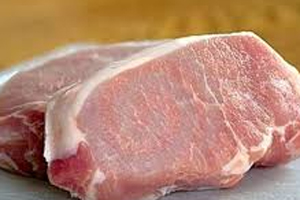UK: Supply chain must improve pork eating quality

Improving the eating quality of pork and how to realise genetic potential were two key areas of discussion at the final JSR Farming Conference, York, last week.
The whole of the supply chain needs to work together to improve the overall eating quality of pork, according to a meat science expert.
Premium pork products often taste no better than standard products and bad eating experiences discourage repeat purchases, Caroline Mitchell, JSR director of meat science, told delegates at the JSR Farming conference in York.
She said premium pork products were often sold with a story that pigs were reared “slowly and steadily”, but this did not correlate to the meat’s eating quality.
“Perception isn’t always right. Animals that don’t reach their potential [weight gain] have poorer eating quality.”
Studies showed interrupted growth produced the toughest meat at 5.4kg shear force in comparison to just 4.4kg for quick finishing, she explained.
“We need to move away from the reliance of a story being the premium aspect of a product. If we are able to select genetics for eating quality and produce them within an outdoor production system you can still have a story, but you also have the eating-quality benefits.”
She said, for example, selecting genetics for high levels of intramuscular fat could not only improve flavour but succulence, too.
Mitchell said there were steps that could be taken by farmers and processors to improve meat-eating quality.
Fasting pigs on farm for an optimum of 14-18 hours preslaughter reduced the risk of DFD (dark firm dry) meat, she said.
“Animals that have not been fasted or have been fasted for too long have higher risk of DFD, yet no one actually acknowledges this.”
Mitchell said keeping lairage time to a minimum of three hours also helped reduced DFD.
“Load pigs on time, keep to the delivery slot and avoid overnight lairage at all costs,” she advised.”
Similarly, she said supermarkets needed to take measures to improve the consistent eating quality of pork.
She said a greater uptake of vacuum packaging rather than modified atmosphere packing (MAP) would improve the eating experience.
High levels of oxygen used during MAP packing turns the meat a cherry red colour – a quality desired by consumers. But it reduces eating quality by increasing fat and protein oxidation, which causes rancidity and increases toughness, she explained.
“Vacuum packaging doesn’t toughen meat, it allows the meat to continue the ageing process, which means the product is going to be more tender.”
She said there were wide variations in cooking times and temperatures on packaging instructions and more clarity was needed.
“To get a consistent product you need a consistent cooking instruction. What is a moderate cooking temperature? Rather than say a “moderate temperature” give a specific temperature.
“If we can increase eating quality, we can increase repeat purchases and industry sustainability,” she added.
Source: Rhian Price, Farmers Weekly











